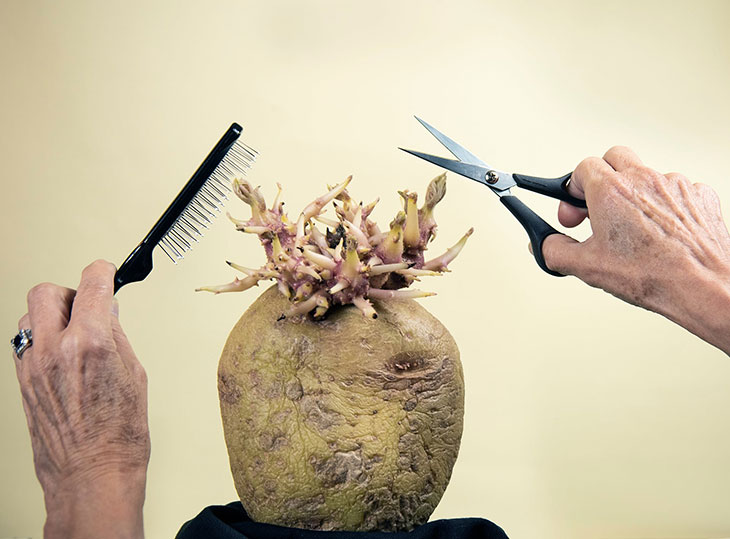Rakewell was recently tickled to learn of a competition called Potato Photographer of the Year. The open-call photography contest was launched this year to raise money for the Trussell Trust, which runs a network of food banks in the UK. At a time of financial hardship for many, food banks are doing essential work and any initiative to support them should be lauded. It helps, of course, that the winning and shortlisted entries – judged by a panel including Martin Parr – are deliciously imaginative.
Highlights include what looks like a sweet potato (in fact only a distant relation to its white-potato counterpart), posed and decorated to resemble a slug:
Photo: Laure Gibault

A tableau vivant of three potato peelers, making effective use of chiaroscuro:
Photo: Tova Krentzman

And the winning entry, taking up the all-too-topical theme of lockdown hair and haircuts – or perhaps drawing inspiration from Tim Burton’s Edward Scissorhands?
Photo: Ray Spence

Culinarily speaking, the potato is already widely recognised for its versatility, its capacity to be transformed into everything from creamy mash to a bag of crunchy Kettle Chips. But perhaps this humble vegetable has not been appreciated enough for its aesthetic uses. How many children around the world have experimented with abstraction via the technique of potato printing? Or dabbled in cubism when rearranging the face of Mr. Potato Head? (Side note: originally the Hasbro toy did not come with a plastic potato-shaped body; children had to use real vegetables.)
For professional artists, too, potatoes have been a valuable resource. Where would Jean-François Millet – or indeed any French realist painter – be without the inspiration gleaned from the potato fields of Barbizon and beyond?
Potato Planters (c. 1861), Jean-Francois Millet. Museum of Fine Arts, Boston

By the 19th century the vegetable (an import from the Americas) had been established as a staple food of poor and rural communities, making it equally a staple for those artists seeking to capture the experience of peasant life – perhaps none more famously than Van Gogh in his great painting of 1885, The Potato Eaters:
The Potato Eaters (1885), Vincent Van Gogh. Van Gogh Museum, Amsterdam

With the meteoric rise of fast food in the 20th century, chips (french fries, if you must) became a natural subject for zeitgeisty Pop artists like Claes Oldenburg and Wayne Thiebaud. Of note also is David Hockney’s early lithograph of a fish and chip shop, which spent decades hanging above the fryer at a chippy in Bradford – until it sold for £18,750, more than three times its low estimate, at auction in 2017. Not so cheap as chips, then.




